
The national flag of Romania is a tricolour. The Constitution of Romania states that "The flag of Romania is tricolour; the colours are arranged vertically in the following order from the flagpole: blue, yellow, red". The flag has a width-length ratio of 2:3; the proportions, shades of colour as well as the flag protocol were established by law in 1994, and extended in 2001. Its similarity to the flag of Chad has caused international discussion.

Dorohoi is a city in Botoșani County, Romania, on the right bank of the river Jijia, which broadens into a lake on the north. The city administers three villages: Dealu Mare, Loturi Enescu, and Progresul.

Nicolae Rădescu was a Romanian army officer and political figure. He was the last pre-communist rule Prime Minister of Romania, serving from 7 December 1944 to 1 March 1945.
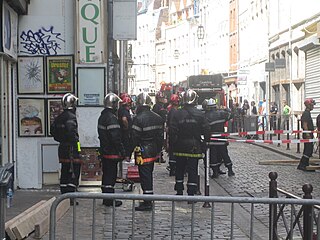
The fire service in France is organised into local fire services which mostly cover the Departments of France, with a few exceptions. There are two types of fire service:

The Soviet occupation of Romania refers to the period from 1944 to August 1958, during which the Soviet Union maintained a significant military presence in Romania. The fate of the territories held by Romania after 1918 that were incorporated into the Soviet Union in 1940 is treated separately in the article on Soviet occupation of Bessarabia and Northern Bukovina.
As firefighting has a rich history throughout the world, traditions in this profession vary widely from country to country.
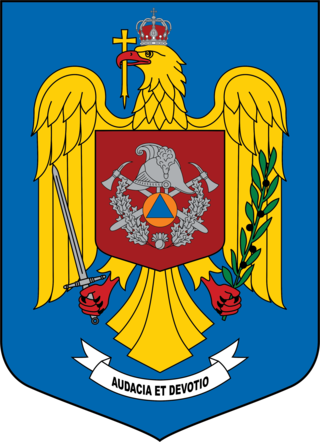
The Romanian General Inspectorate for Emergency Situations is a public structure subordinated to the Ministry of Internal Affairs, created on December 15, 2004, by merging the Civil Defense Command with the General Inspectorate of the Military Firefighters Corps. The structure is specialised in fire safety and civil protection.

Gheorghe (George) I. Brătianu was a Romanian politician and historian. A member of the Brătianu family and initially affiliated with the National Liberal Party, he broke away from the movement to create and lead the National Liberal Party-Brătianu. A history professor at the universities of Iași and Bucharest, he was elected titular member of the Romanian Academy. Arrested by the Communist authorities in 1950, he died at the notorious Sighet Prison.

Mihail Lascăr was a Romanian general during World War II and Romania's Minister of Defense from 1946 to 1947.

Dumitru Dămăceanu was a Romanian army officer in World War II, later promoted to brigadier-general, who played a predominant role in the royal coup of August 23, 1944.

Paul Pouderoux was a French officer.

Gheorghe Avramescu was a Romanian Lieutenant General during World War II. In 1945, he was arrested by the NKVD on the Slovakian front and died in custody the next day.
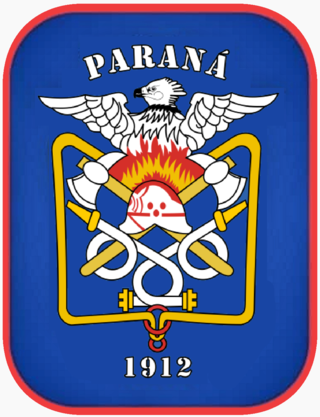
In the State of Paraná, Brazil, the Firefighters Corps is part of the structure of the Military Police of State.
In Brazil, the Military Firefighters Corps are military public security forces, responsible for civil defense, firefighting and search and rescue inside the federative units. Since 1915, it has been a military reserve force and an auxiliary force of the Brazilian Army, also composing the Single System of Public Security. Members of the Military Firefighters Corps, such as the members of the Military Police, are designated as being part of the military of the Federative Units by the Federal Constitution.

The National Socialist Party or Steel Shield was a mimetic Nazi political party, active in Romania during the early 1930s. It was led by Colonel Ștefan Tătărescu, the brother of Gheorghe Tătărescu, and existed around the newspaper Crez Nou. One of several far-right factions competing unsuccessfully against the Iron Guard for support, the group made little headway, and existed at times as a satellite of the National-Christian Defense League.
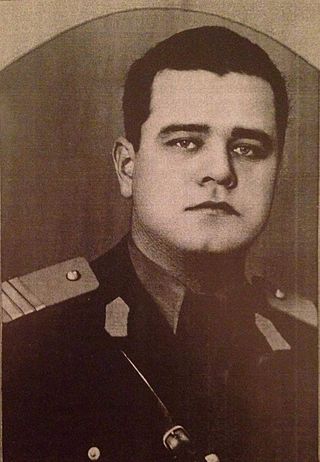
Major Nicolae Dabija, knight of Order of Michael the Brave, was an officer of the Romanian Royal Army and a member of the anticommunist armed resistance in Romania. He was the leader of the "National Defense Front–The Haiduc Corps" resistance group in the Apuseni Mountains.
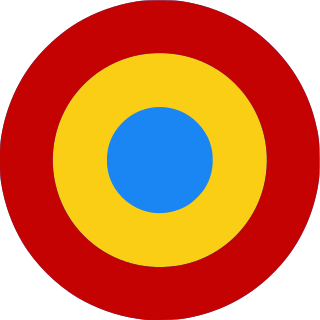
The Romanian Air Corps or Aviation Corps (RAC) was the air arm of the Romanian army until the formation of the Romanian Air Force. It was established on 1 April 1913 as the Military Aeronautics Service and subordinated to the Engineer Inspectorate, being organized in two branches – the aviation and the balloon branch. On 23 August 1915, the RAC was formed as an independent military arm and operated until 1 January 1924 when it became an equal to the Army and Navy, being redesignated as the Royal Romanian Air Force.

Cella Delavrancea was a Romanian pianist, writer and teacher of piano, eldest daughter of writer Barbu Ștefănescu Delavrancea, sister of architect Henrieta Delavrancea-Gibory, Niculina Delavrancea and "Bebs" Delavrancea, member of the circle of Eugen Lovinescu. She was married to diplomat Viorel Tilea during World War I (divorced), to Aristide Blank (divorced), and to Philippe Lahovary, and was one of the intimate friends of Queen Marie of Romania. She's also known for her romantic relationship with Nae Ionescu, Romanian logician and politician, spiritual mentor of the "Eliade generation".
FIDAC was established in Paris in November 1920, at the initiative of the veterans from World War I predominant pacifists, such as Hubert Aubert, director in UNC , France, and in particular Charles Bertrand, Secretary-General of UNC and deputy in the French Parliament. They had the idea of uniting veterans’ associations established after the end of World War I in various allied countries into an international federation whose main purpose was to promote peace, continuously strengthen the brotherhood initiated on the battlefield, and provide help to the wounded, the disabled, widowers, war orphans, veterans, and also commemorate the heroes fallen in battles. Charles Bertrand, general secretary and future president of UNC in France, thus became the first president of FIDAC (1920–1924).

Paraschiv Vasilescu was one of the generals of the Romanian Land Forces in the First World War. Between March 3, 1904 and April 1, 1905, Major Vasilescu was the commander of the Border Guard Corps. He served as a division commander in the 1916, 1917, and 1918 campaigns.
















